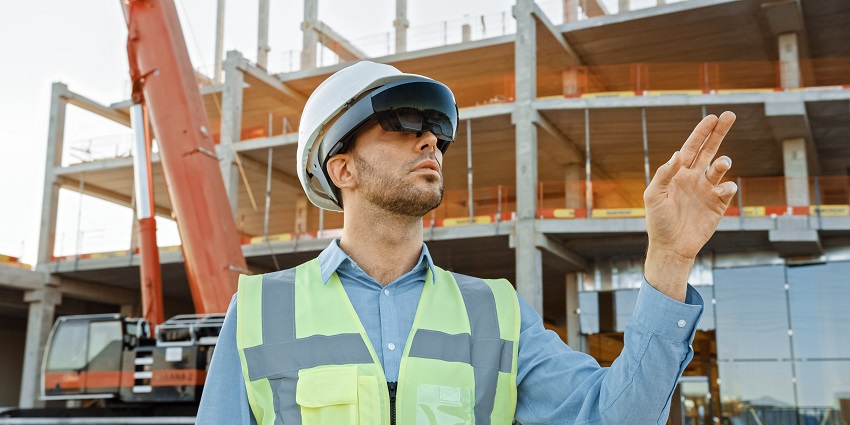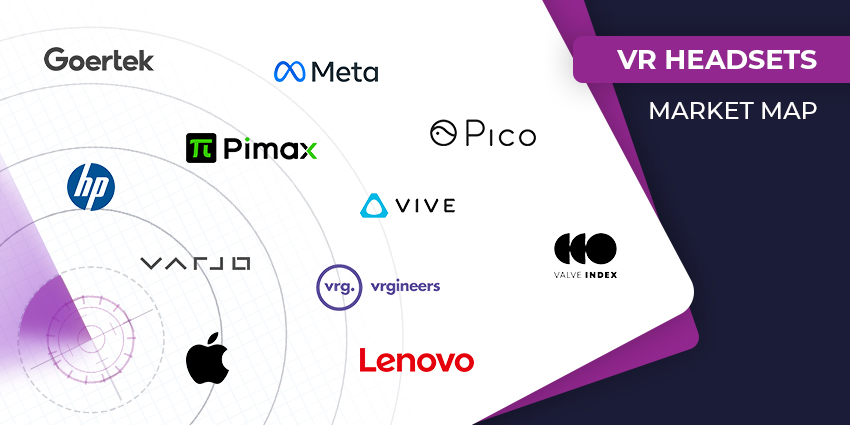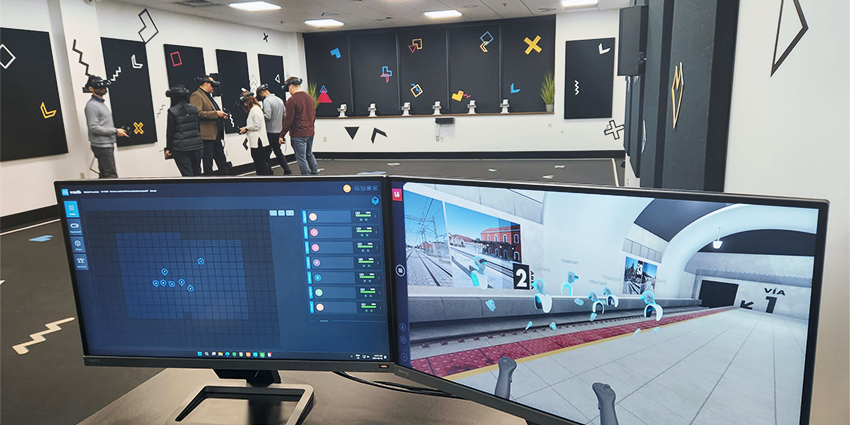Extended Reality has taken the world by storm, influencing workflows throughout virtually every industry. The right tools not only improve collaboration between team members, but also pave the way for more innovative development and design processes.
In the AEC environment, XR solutions are quickly becoming a critical part of the modern workflow. With virtual reality, companies can build models of projects in a digital landscape, and make it easier to interact with specialists from all over the world. AR and MR solutions can make it easier to show projects to clients, giving them an insight into what a finished result might look like.
What’s more, Mixed and Augmented reality also allow for greater access to valuable content on the job site, reducing risk levels, and improving productivity. Let’s take a look at some of the top vendors paving the way for construction innovation in the XR world.
Meta
As a market leader in the XR environment, and one of the top vendors paving the way towards the Metaverse, Meta has a strong role to play in the future of AEC projects. The company offers access to one of the most affordable and flexible VR headsets on the market in the form of the Oculus Quest, allowing all businesses, large or small to explore virtual reality.
What’s more, Meta’s flexibility makes it easy to combine Oculus headsets with state-of-the-art technology and software for building prototypes and designs. Meta recently announced the arrival of a popular architectural tool “Unity Reflect” in the Meta Quest environment for 2022.
The company has also introduced a variety of different tools for building models in the metaverse, such as the “Builder Bot” for Horizon Worlds. As demand for metaverse environments continues to grow, the presence of Meta in the construction space is sure to evolve.
Microsoft
Perhaps the go-to solution for mixed reality innovation in the construction space, Microsoft provides businesses with a unique opportunity to combine real and virtual landscapes. Microsoft’s HoloLens 2 mixed reality technology makes it easy for engineering and construction companies, as well as architectural leaders, to bring digital project maps into the real world.
The company has already begun making waves in the AEC landscape by offering organisations the opportunity to see 3D diagrams of the project they’re creating in the real world through holographic technology. The same solution also makes it easier for users to collaborate on truly 3-dimensional blueprints and project designs.
The flexibility of the Microsoft Mesh platform for designing MR experiences makes it easier for businesses to implement the design tools they’re already using. Additionally, Microsoft Mesh also integrates with Microsoft Teams for collaboration.
HTC VIVE
HTC Vive stands out as one of the market leaders among companies creating XR solutions specifically for the enterprise and business landscape. The headsets created by VIVE are designed to offer immersive collaborative experiences in virtual reality for specialists designing complex projects and showcasing those creations to clients.
The VIVE Pro headset with its incredible spatial audio and high-fidelity visuals allows construction companies to take their clients on a tour around a building or environment before ground has even been broken. The technology also integrates perfectly with a range of other design tools and software solutions used in the AEC space.
VIVE’s ever-evolving range of VR products, including the new HTC Vive Flow glasses, for mobile VR immersion, will unlock a new range of opportunities for designers and creators in the AEC space. There are even tools available with built-in hand and eye tracking.
Unity
One of the most popular platforms available for developing software crucial to the building and project development environment in the AEC world, is Unity. The Unity software ecosystem makes it easy to create 3D solutions for architecture, engineering, and construction use cases.
The Unity platform makes it simple to connect BIM data, various viewpoints, and even spatial audio into a virtual environment for AEC employees. Unity has a huge selection of documentation specially designed to guide AEC employees through the process of building programs for modelling, digital twin creation, training and safety, and sales and marketing.
One of the most impressive things about Unity is it allows companies to invest in any avenue of extended reality. Companies can explore the benefits of VR, AR, and MR for boosting team collaboration, project design, and client interactions.
Magic Leap
As companies in the AEC space continue to invest in tools capable of combining real-world environments with digital technology, Magic Leap is growing in popularity. One of the top vendors on the market to deliver AR headsets specifically designed for the business landscape, Magic Leap makes it easier to bring design concepts onto any construction site.
With Magic Leap headsets, users can see 3D representations of projects and models in front of them when they’re working in a fast-paced construction landscape. The technology also paves the way for better collaboration and creativity when working with specialists on new designs.
Magic Leap also recently collaborated with GeoPogo for an all-in-one solution for AEC design, with incredible visualization tools for architectural projects.
Varjo
Varjo is another market leader in the XR landscape worth watching for those in the architectural, engineering, and construction landscape. The company has already worked alongside a number of major firms to develop faster time-to-market strategies and improved collaboration efforts.
The Varjo ecosystem includes a range of tools for both mixed reality experiences and virtual reality, so construction companies can explore various flavours of extended reality. Varjo’s technology makes it easy to visualize, iterate and modify various 3D creations in the AEC world with the highest visual fidelity available among any brand.
Varjo allows AEC companies to leverage state-of-the-art technology to predict what a project might look like before completion, and even take clients on guided tours of projected environments. The company even has its own cloud platform.







